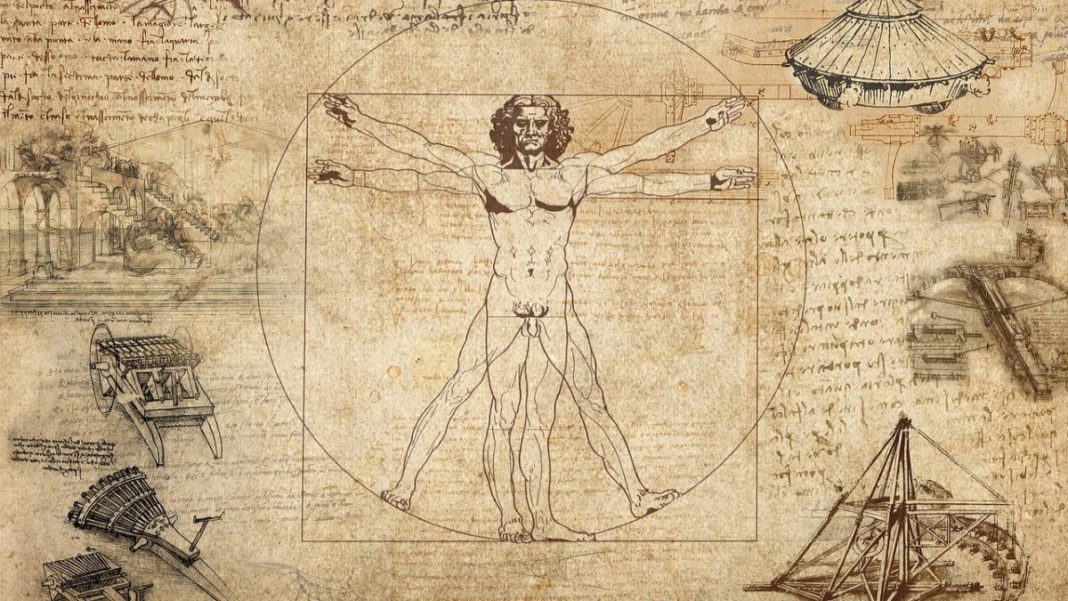ITALY: One of the most iconic and enduring works of art in human history, the “Vitruvian Man” is a remarkable representation of the ideal human form and an awe-inspiring symbol of balance and harmony.
Created by the genius artist, scientist, and polymath Leonardo da Vinci, this timeless masterpiece has transcended centuries, captivating the world with its mathematical precision and artistic brilliance.
Leonardo da Vinci, born in Italy in 1452, was a true Renaissance man, exploring a vast array of disciplines, from anatomy and engineering to painting and sculpture.
Inspired by the writings of the ancient Roman architect Vitruvius, Leonardo sought to depict the perfect human form in a visually striking and mathematically accurate manner.
The “Vitruvian Man” draws its name from the Roman architect Vitruvius, who authored “De Architectura,” a treatise that emphasized the importance of proportion and symmetry in architecture.
The illustration itself is a study of the ideal human proportions, showing a nude male figure in two superimposed positions. With arms and legs outstretched, the man stands within both a square and a circle.
The image is a testament to Leonardo’s deep interest in human anatomy and his fascination with the mathematical precision underlying nature’s design.
The drawing exemplifies the artist’s belief in the inherent connection between the human body and the geometric principles governing the cosmos.
At the heart of the “Vitruvian Man” is the concept of the “divine proportion” or the “golden ratio,” a mathematical ratio that appears in countless natural phenomena and is believed to evoke a sense of beauty and aesthetic harmony.
Leonardo’s depiction skillfully demonstrates how the proportions of the human body adhere to this divine ratio, making it a harmonious and visually pleasing composition. In the illustration, the man’s outstretched arms and legs align with the edges of the square, while his navel is precisely at the center point.
This alignment showcases the seamless relationship between the human form and geometric principles, emphasizing the idea that the human body is a microcosm of the universe. The “Vitruvian Man” represents more than just an anatomical study; it embodies a profound philosophical concept.
Leonardo saw the human body as a metaphor for the universe, and by extension, he believed that understanding the human form could lead to a deeper comprehension of the cosmos.
Beyond its mathematical significance, the “Vitruvian Man” also holds symbolic and cultural value. It has become an emblem of the Renaissance period, a time of great intellectual and artistic flourishing.
The drawing epitomizes the era’s quest for knowledge, innovation, and the pursuit of excellence in various fields. Despite its age, the “Vitruvian Man” remains a source of inspiration and fascination for people across the globe.
The drawing’s enduring popularity speaks to its universal appeal and enduring relevance. Countless replicas and reproductions adorn museums, galleries, textbooks, and even modern merchandise, perpetuating their legacy and keeping Leonardo da Vinci’s brilliance alive.
Today, the “Vitruvian Man” stands as a testament to the profound synergy between art and science, demonstrating how an artist’s creative vision can intersect with mathematical principles to produce a work of timeless significance.
Leonardo da Vinci’s exploration of the ideal human proportions continues to inspire artists, scientists, and thinkers to this day, serving as a powerful reminder of the boundless potential of human ingenuity and creativity.
Also Read: Project K Title Unveiled: ‘Kalki 2898 AD’ Teaser Promises Sci-fi Film with Dystopian Future Setting



